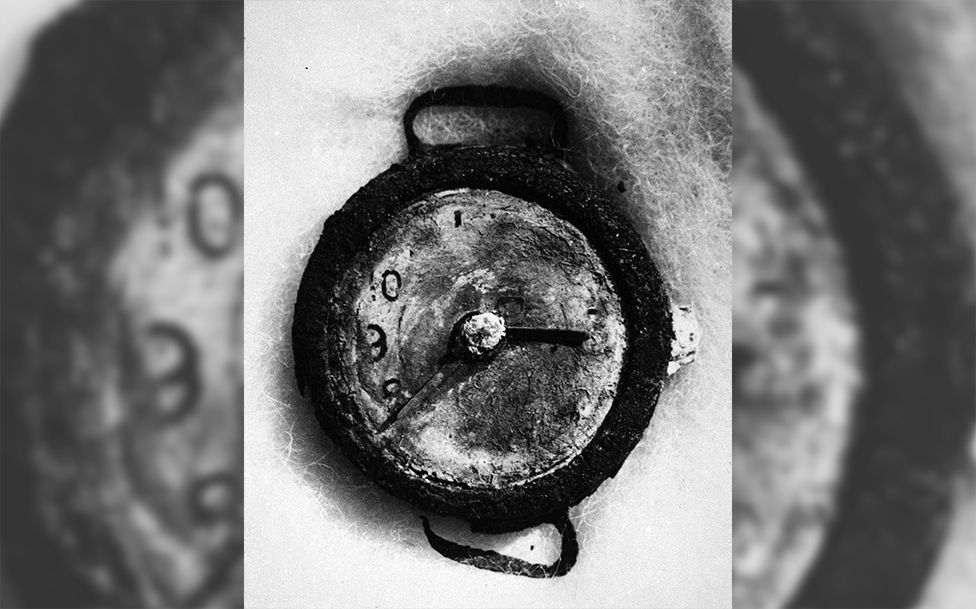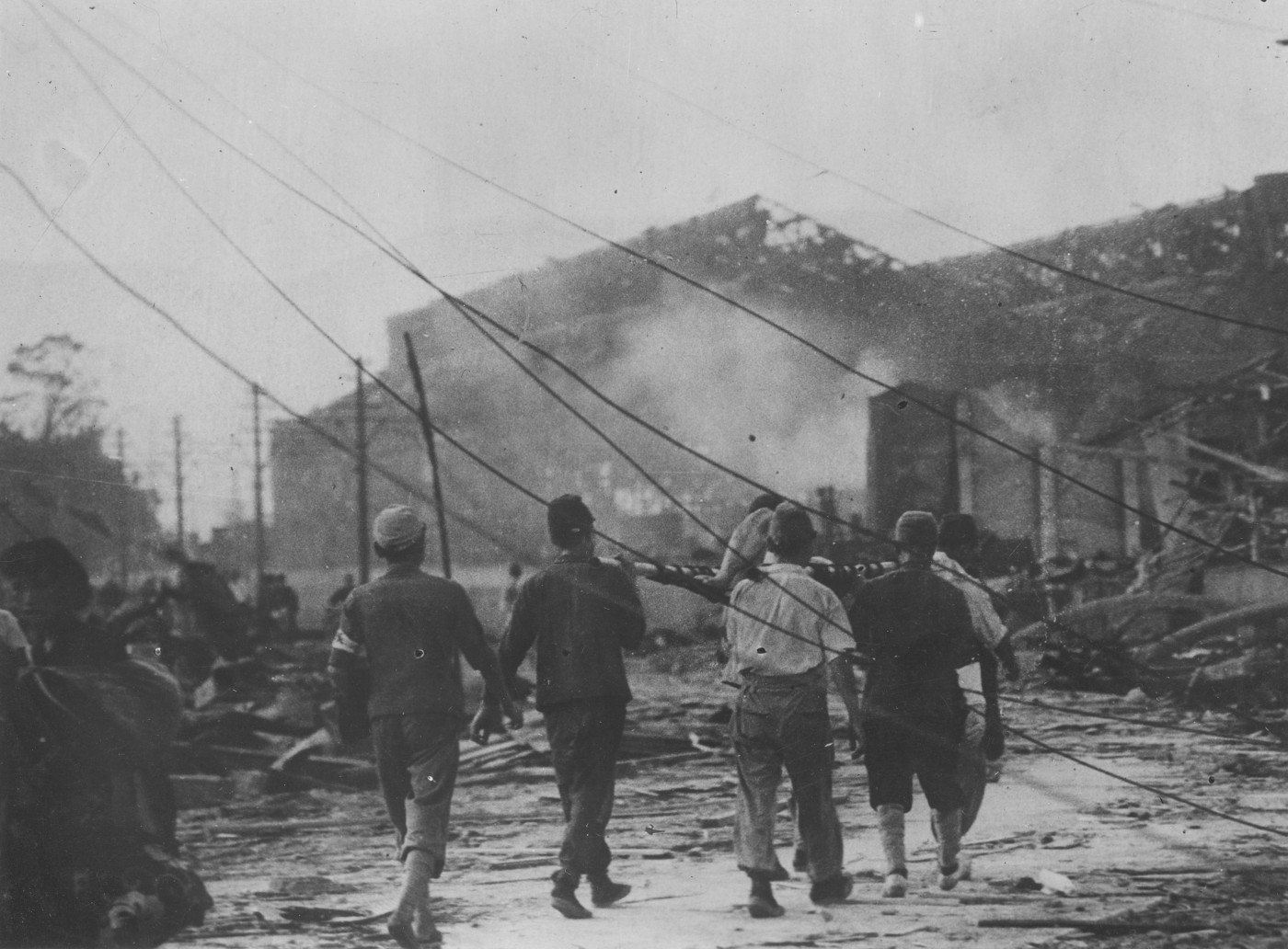
Some of the survivors died within a few days from radiation sickness, while others worked until retirement. There were 29 employees killed immediately (including those in the branch and those on their way to work), 40 were injured and none missing. Most of the employees were on their way to the office when the bomb was dropped. On the morning of the bombing, the bank was to be open as usual. Papers inside the building were blown as far away as Numata-cho by the blast. The coin room was not damaged, and the cash and passbooks remained. While the interior was destroyed, the exterior remained.

It was not totally destroyed in the bombing of August 6, 1945. It was designed in a general Romanesque architectural style, and was characterized by a large arch with molding on its front facade. It was built south of the head office of Geibi Bank (Now head office of Hiroshima Bank ,) which had been built the year before and was almost the same size. The rooms for business, reception and coinage were on the first floor, the meeting rooms and cafeteria on the fourth floor, and the boiler room in the basement. The building was constructed out of reinforced concrete, with four floors above ground and one below with an open ceiling up to the third floor. It was designed by Kenzō Takekoshi ( 竹腰健造) at the department of engineering of Sumitomo Group (now Nikken Sekkei), and was constructed by the Obayashi Corporation. The current location of the Sumitomo Mitsui Banking Corporation, Hiroshima Branch is Kamiya-cho 1 Chome. Human Shadow Etched in Stone was originally part of the stone steps at the entrance of the Hiroshima Branch of Sumitomo Bank, located 260 meters from ground zero. The white building in the center is the main office of Geibi Bank, and the building on the right is the Hiroshima Branch of Sumitomo Bank. The view toward the east from Hiroshima Chamber of Commerce and Industry. There existed Human Shadow of Death near the person standing at the entrance. Hiroshima Branch of Sumitomo Bank after the bombing. History Hiroshima Branch of Sumitomo Bank Īerial photograph on August 8, 1945, two days after the bombing While radiation could severely inflame and ulcerate the skin, complete vaporization of the body is impossible. Exposing a body to this level of radiant heat would leave bones and carbonized organs behind.

The ground surface temperature is thought to have ranged from 3,000 to 4,000 degrees Celsius just after the bombing. However, the possibility of human vaporization is not supported from a medical perspective. As a result of these previous statements, some conclusions in the literature state that she was the person depicted in the stone.Īccording to museum staff, many visitors to the museum believe that the shadow is the outline of a human vaporized immediately after the bombing. In the past, the museum exhibit contained a statement that the person was a 42-year-old woman named Mitsuno Ochi ( 越智ミツノ, Ochi Mitsuno). As of 2016, the museum exhibit states that "Several people have suggested that the person could be a member of their family".

However, the person's identity is still unknown. A former soldier testified that he had recovered the person's body. Some people stated that they saw the person sitting at the entrance just before the bombing.

It is thought that the person depicted in the stone died immediately with the flash of the atomic bomb, or after falling down after the explosion. At present, the stone is surrounded by glass. In 1991, the museum reported that earnest investigation of preservation methods had commenced. In April 1975, the museum began research into preserving the shadow. In January 1971, the museum acquired the stone on which the human shadow had become indistinct due to weathering. A piece of stone containing the artifact (3.3 meters wide by 2 meters high) was cut from the original location and moved to the museum. A black deposit was also found on the shadow. It is also known as Human Shadow of Death or simply the Blast Shadow.Īccording to the museum, it is thought that the person had been sitting on the stone step waiting for the bank to open when the heat from the bomb burned the surrounding stone white and left the person's shadow. It is thought to be the residue of a person who was sitting at the entrance of Hiroshima Branch of Sumitomo Bank when the atomic bomb was dropped over Hiroshima. Human Shadow Etched in Stone ( 人影の石, hitokage no ishi ) is an exhibition at the Hiroshima Peace Memorial Museum.


 0 kommentar(er)
0 kommentar(er)
